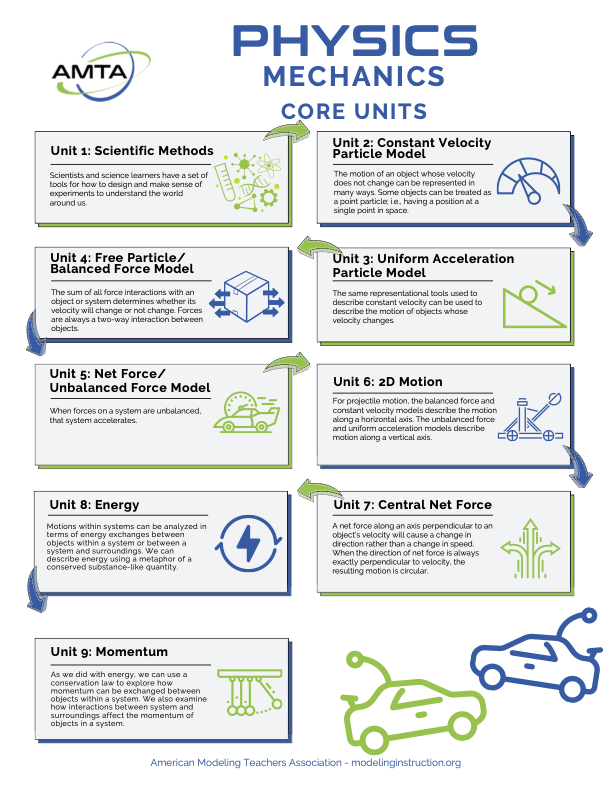Sequencing
Modeling physics teachers work together to constantly refine the mechanics materials, and multiple storylines have been followed effectively in the classrooms of teachers nationwide.
The most recent significant edit of materials available to our members is Mechanics v3, which was developed in 2013, and follows the order shown in the graphic at right.
Curriculum materials for additional courses (mechanical waves and sound, Light, E & M, CASTLE (Capacitor Aided System for Teaching and Learning Electricity) are also available.

Sample Materials
Follow this link for sample materials from Physics Unit 2 – Constant Velocity. Note that this sample unit does NOT contain any quizzes or tests, and addresses the following objectives for students:
Represent and analyze constant velocity motion
- Graphically: Construct and interpret position vs. time and velocity vs. time graphs for constant velocity motion.
- Algebraically: Create and use mathematical models of position as function of time, average speed, and average velocity for constant velocity motion.
- Diagrammatically: Draw and explain motion maps for constant velocity motion.
- Verbally: Construct and interpret written and oral descriptions of constant velocity motion.
Solve constant velocity problems
- Use graphs, equations, diagrams, and verbal descriptions to solve constant speed and velocity problems.
Distinguish between physics terms related to constant velocity
- Differentiate between and apply terms for “how far” (position, displacement, and distance) and terms for “how fast” (average speed and average velocity).
Interested in a Physics Workshop?
Workshops in mechanics, computational modeling – physics first,
E & M are available in Summer 2024.
First-time Modeling Workshop attendees qualify for a free one-year membership to AMTA. Members have access to ALL instructional resources, webinars, distance learning courses, and other membership services!
